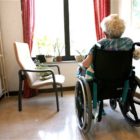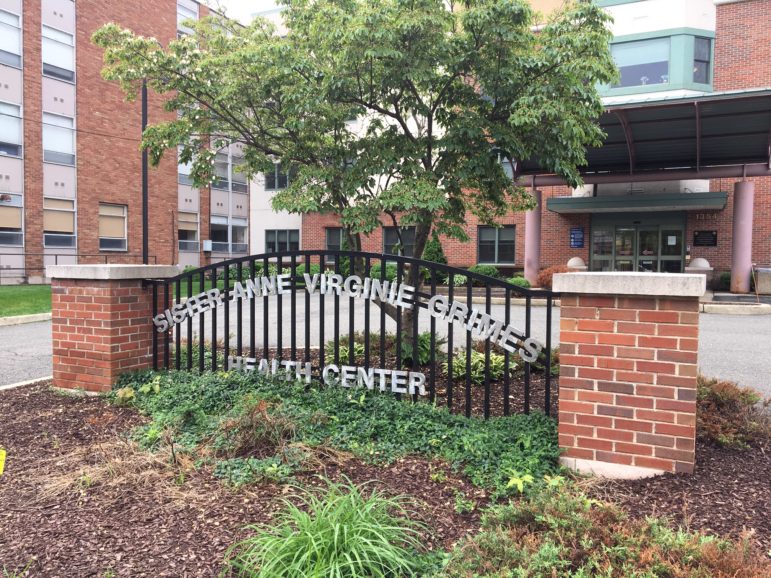By Cara Rosner
With tougher standards, 48% of the state’s nursing homes—104 facilities—received a four- or five-star rating for staffing, data from the Centers for Medicare & Medicaid Services (CMS) show.
Thirty-nine nursing homes (19%) earned a one- or two-star rating for staffing levels.
Nursing Home Compare’s five-star system (5 being “much above average,” 4 “above average,” 3 “average,” 2 “below average” and 1 “much below average’) examines quality of care delivered, staffing and overall performance, among other factors. It gives consumers the ability to compare quality among facilities. CMS updated the rankings in April, following the release of new payroll data that gives insights into nursing home staffing trends. The site rated 217 facilities in Connecticut and thousands more nationwide.
After a series of complaints about the quality of residents’ care nationally, CMS announced in 2018 measures to increase nursing home oversight and provide transparency on staffing. In compiling its staff ratings, CMS considered facilities’ staffing hours for registered nurses (RNs), licensed practical nurses (LPNs), licensed vocational nurses (LVNs), and nurse aides. The information compiled is from the fourth quarter of 2018, from the most recent payroll data available.

Check out our database of the 2019 nursing home inspection reports here.
Lisa Freeman, executive director of the Connecticut Center for Patent Safety, said staffing levels are a top priority among family members of nursing home residents. “It’s always an issue that’s brought up,” she said. In some cases, facilities simply are short-staffed; in others, staff may not be used the most efficiently, she said.
Putting more attention on staffing levels will help spur improvements, Freeman said.
Nationally, 1,638 nursing homes received one-star ratings for staffing, according to a Kaiser Health News analysis. Some facilities were downgraded because their payroll records showed no registered nurse hours for four days or more, while others failed to provide payroll information. Medicare had previously penalized nursing homes with seven or more days without an RN.
Among the Connecticut nursing homes given a five-star rating for staffing are: Avon Health Center; Edgehill Health Center, Stamford; Filosa for Nursing and Rehabilitation, Danbury; Grimes Center, New Haven; Jerome Home, New Britain; and Jewish Senior Services, Bridgeport.
The facilities with the one-star rating for staffing include: Advanced Center for Nursing and Rehabilitation, New Haven; Bridgeport Health Care Center; Bishop Wicke Health and Rehabilitation Center, Shelton; and Village Green of Bristol Rehab and Health Center.
Matthew Barrett, president and CEO of the Connecticut Association of Health Care Facilities, said Nursing Home Compare is a valuable tool for families and nursing home residents, but shouldn’t be the only thing consumers look at when choosing or evaluating a facility.
The latest ratings were released after CMS “abruptly” changed the methodology by which it rates facilities, which could confuse some people, said Barrett, whose organization represents 150 nursing facilities.
“The government has made changes to how it rates skilled nursing care centers across the nation that will result in some Connecticut skilled nursing facilities receiving a lower [overall] rating” he said. “Although the rating has changed, the quality of care being provided in these Connecticut skilled nursing homes hasn’t. Specifically, the government has updated the Five-Star Quality Rating System in a way that makes it harder for all nursing centers to earn stars.”

C-HIT.org Photo.
The Grimes Center, New Haven, received five-star ratings for staffing and overall performance.
In Connecticut, 64 facilities (29%) received a five-star, overall rating from CMS. They include, Autumn Lake Healthcare at Norwalk; Avery Heights, Hartford; Branford Hills Health Care Center; Grimes Center, New Haven; Saint Mary Home, West Hartford; Valerie Manor, Torrington; and Guilford House.
The lowest overall rating, one-star, was given to 29 facilities (13%), including Advanced Center for Nursing and Rehabilitation, New Haven; Apple Rehab Avon; Apple Rehab Saybrook; Arden House, Hamden; Bridgeport Health Care Center; Cassena Care at Norwalk; Hewitt Health & Rehab Center, Shelton; RegalCare at Greenwich; and RegalCare at New Haven.
Overall ratings encompass not only staffing, but also health inspections and quality of care.
Barrett said several former five-star homes have lost one or more stars under the new system.
“That is concerning,” he said. “The latest star ratings cannot be compared to ratings prior to April because the goal posts have been moved and are just different.”
Still, Barrett acknowledged some nursing homes struggle with staffing.
The Conn. Health I-Team reported last November that staffing levels challenged the quality of care at some facilities. Between 2015 and 2018, the state Department of Public Health cited and fined nursing homes for a total of 247 violations. In 25 of those cases, citations noted that two staff members were required to help or move a resident and only one was used. Of those cases, 17 incidents occurred in 2017 and 2018, and most resulted in a resident being injured.
Though it doesn’t change staffing requirements, a bill approved by the state legislature requires nursing homes to calculate and post daily staffing information.
Separately, the state budget requires the Department of Social Services to increase Medicaid reimbursements to nursing homes by 4% by January 2021. The budget calls for a 2% increase starting July 1, another 1% increase starting Oct. 1, 2020, and another 1% increase by Jan. 1, 2021. That money is earmarked for employee wages and benefits, Barrett said.
One looming challenge on the horizon for facilities, Barrett said, is the state’s rising minimum wage, which could make it harder for nursing homes to recruit and retain workers. Once minimum wage increases to $15 an hour, he said, service sector jobs will pay close to what nursing homes pay—and nursing-home work often is more difficult, both physically and emotionally.
Support Our Work
The Conn. Health I-Team is dedicated to producing original, responsible, in-depth journalism on key issues of health and safety that affect our readers, and helping them make informed health care choices. As a nonprofit, we rely on donations to help fund our work.Donate Now
- Connecticut Health I-Team
- About C-HIT
- Sponsors
- Media Partners
- Contributors
- Contact
In Case You Missed It
- Hospitals Bill More Than $1 Billion In Facility Fees Over Two Years Connecticut consumers were billed for more than $1 billion in facility fees for outpatient services in 2015 and 2016, documents filed with the state Office of Health Care Access (OHCA) show.
- Nurses’ Drug Abuse Top Cause Of Disciplining, But Once Sober, Some Nurses Get Relicensed Out of work and addicted to the anti-anxiety medication Klonopin, Heather Delaney, a licensed practical nurse from Stratford, checked herself into Bridgeport Hospital in 2011 when she could no longer handle withdrawal without medical help.
Follow Us
Like Us on FacebookFollow Us on TwitterSubscribe via RSS
© Copyright 2019, Connecticut Health I-Team
Built with the Largo WordPress Theme from the Institute for Nonprofit News.

